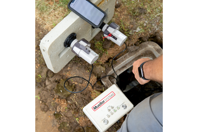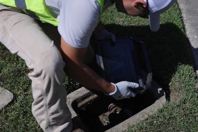UTILITY MANAGEMENT SOLUTIONS
-
Extreme weather and seismic threats are driving a new collaborative approach to infrastructure. By aligning utility needs with academic research and manufacturing innovation, providers can validate resilient technologies and deploy data-backed solutions for long-term reliability.
-
Las Vegas Valley Water District is modernizing conservation efforts with Temetra, using high-resolution meter data to detect leaks sooner, engage customers, and secure water resources amid extreme drought conditions.
-
For a water utility of any size to function properly, effective meter reading is a vital aspect of day-to-day operations. Meter reading supports both ends of the transaction, ensuring that water is being properly delivered, accounted for and billed each month.
-
Learn how to design wastewater infrastructure that grows with demand. Modular systems allow phased capacity additions that match actual flow, avoiding the high cost of oversizing and eliminating the need for disruptive, repeated construction.
-
Diverse wastewater flows from mixed-use projects strain conventional systems. Learn how advanced biological treatment stabilizes unpredictable loads, ensures compliance, and delivers high-quality water suitable for reuse.
-
Wastewater flows in seasonal resorts are highly volatile. Learn how to stabilize biological treatment against sudden peak demands and low-flow off-seasons, ensuring continuous compliance and securing a high-quality water source for reuse.
-
For modern pipelines and pumps, noise and vibration behavior must be considered in system design. Learn how a wastewater pumping station in Greifswald, Germany reduced pump-induced pressure fluctuations by 90%, accompanied by lower vibration levels in the discharge line, with an innovative AI-enhanced damping system.
-
The city of Jackson faced a water crisis that went beyond the tap. What began as an ambitious plan to modernize its water metering infrastructure in 2014 became a logistical and financial nightmare, costing the city millions in lost revenue and declining public trust. Metering as a Service (MaaS) offered the city an alternative option.
-
Conventional consulting engagements are often structured around responding to discrete problems: a technical fix, a compliance solution, or a tech upgrade within a narrow project scope. While this approach can resolve immediate needs, it reinforces siloed thinking and can perpetuate incrementalism. Transformation demands a shift to systems thinking.
-
There has been an abundance of funding available to address the estimated 9.2 million lead service lines currently deliver drinking water to homes, businesses, schools, and unsuspecting citizens throughout the United States. So it is disheartening to realize that millions of lead water lines are still delivering water to citizens.











